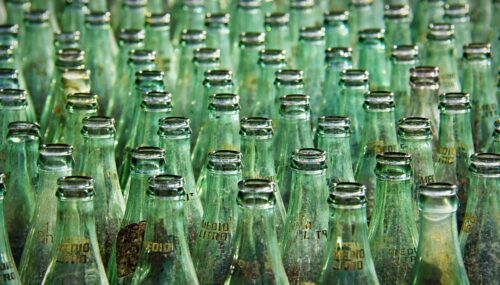Unpacking ExxonMobil’s push for sustainable plastics. From Scope, the blog of the Yale Scientific Magazine.
An article in the journal Science of The Total Environment details the sustainable properties of plastic polyethylene (PE) packaging in comparison to other materials like paper, glass, or aluminum. Aimed at informing policymakers and industry stakeholders, the study suggests that replacing the alternative packaging materials with PE could reduce greenhouse gas emissions. Unfortunately, the paper omits some key factors in its sustainability assessment and fails to account for the long-term environmental persistence of PE, its broader ecological consequences, and potential implications for human health.
The most interesting part of the article might come when the authors disclose funding sources. There, the authors write, “The study was funded by Exxon Mobil Corporation and/or its affiliates.” The affiliations of the authors are no less intriguing: three come from the offices of ExxonMobil, one from the packaging company Trayak, and one from the Michigan State University School of Packaging. All authors reported competing interests with ExxonMobil. Why is their involvement with ExxonMobil a competing interest, you may ask? The answer is surprisingly simple: ExxonMobil produces 9.5 million metric tons of PE plastic every year.
To analyze the benefits and drawbacks of the materials of comparison in the review, the team completed a life cycle assessment of PE. Life cycle assessments are a method of evaluating the environmental impacts associated with all stages of a product’s life, from raw material extraction through production, use, and end-of-life. The ExxonMobil analysis found that PE, nearly across the board, has a lower global warming potential, fossil resource use, and water scarcity impact than alternatives.
If this is true, let’s fully commit to plastic for a cleaner world. Drill Baby Drill!
Not so fast. There are points that our oily friends leave out. The article says, “Due to lack of empirical data, effects due to use phase differences of the packages were excluded and out of scope (e.g., differences in breakage rates or shelf-life extension properties).” This is a convenient point for the plastic producers, as it doesn’t take a materials scientist to deduce that glass bottles or metal tins are far more reusable than their PE counterparts. While one PE container may be less harmful—by some measures—to produce than one glass container, it is far more likely that the PE container will face the end of its life cycle after one use.
What about the effects of plastic litter on the environment? At the beginning of the paper, the authors cite recent efforts to reduce plastic waste, but they do not address the specifics of plastic waste’s effects. The reality is complicated. According to a study funded by the Ocean Conservancy, the US produced, mismanaged, and ultimately littered about two million metric tons of plastic in 2016, among the highest contributions in the world. The omissions of relevant science—and the selection of evidence only in support of the author’s conclusion—point toward an intent to deceive.
So, I have a suggestion for you. Before you read a scientific paper, scroll down to the bottom and read the “Declaration of Competing Interests”. For your own sake, I included mine below:
Declaration of Competing Interest: The author of this article, Wyatt Aiken, is a naturalist and has a vested interest in the health of the environment.

